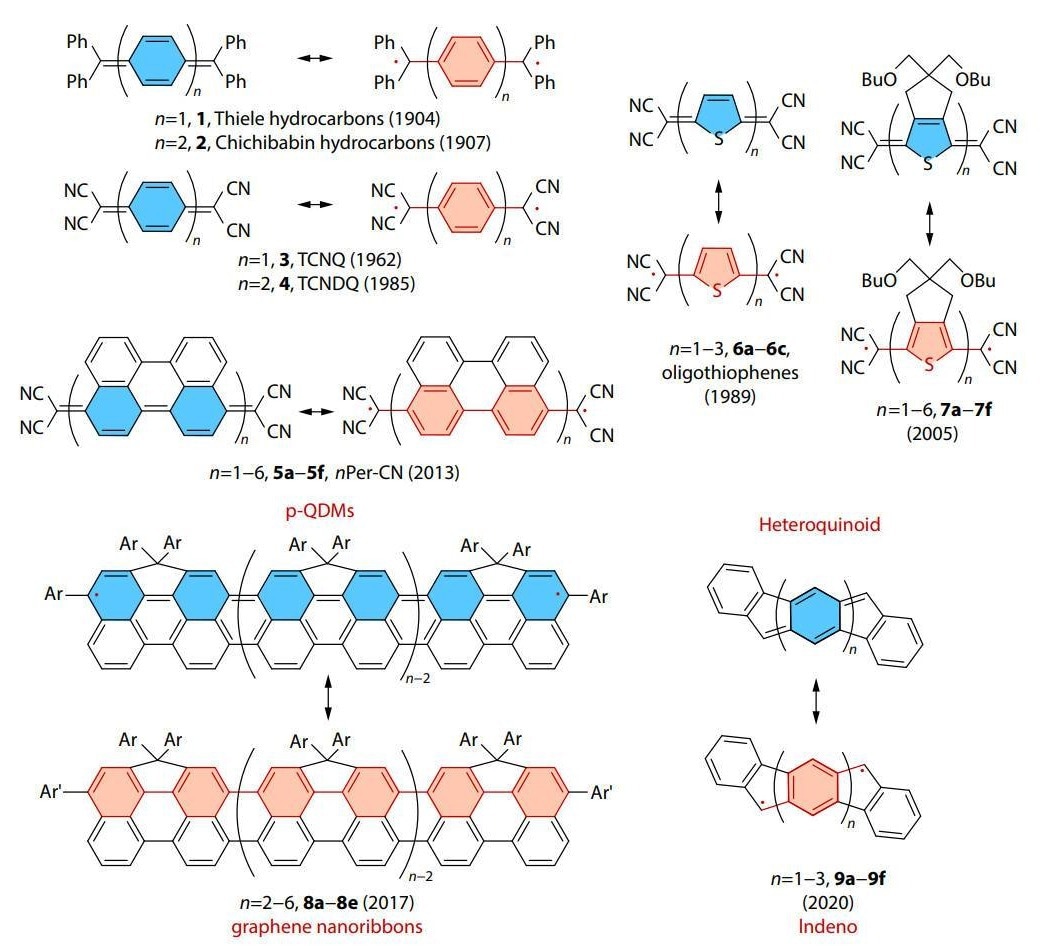Reviewed by Lexie CornerJul 4 2024
A recent review from researchers at Peking University, published in the Chinese Journal of Polymer Science, offers a thorough exploration of open-shell oligomers and polymers. The review covers theory, characterization methods, molecular design, and potential applications of these materials, emphasizing their role in advancing electronic and magnetic technologies.
 Quinone-based oligomers and polymers derived from p-QDMs, Heteroquioids, indeno, and graphene nanoribbons exhibiting triplet ground states or thermally accessible triplet states. Image Credit: Chinese Journal of Polymer Science
Quinone-based oligomers and polymers derived from p-QDMs, Heteroquioids, indeno, and graphene nanoribbons exhibiting triplet ground states or thermally accessible triplet states. Image Credit: Chinese Journal of Polymer Science
Open-shell molecule research has shown great promise in organic electronics and magnetism, especially for those with high-spin ground states. These molecules, which include unpaired electrons, are attractive prospects for cutting-edge technology because of their unusual features, which include long spin lifetimes and weak spin-orbit coupling.
Due to their kinetic and thermodynamic instability, stable open-shell polymers are difficult to design and synthesize. Given these difficulties, a more thorough investigation is required to create strategies that will work for their design, synthesis, and use in high-performance magnetic and electrical devices.
This review thoroughly examines open-shell conjugated polymers, emphasizing their theoretical underpinnings and characterization methods. It covers the fundamentals of diradical and polyradical theory. It delves into experimental techniques like Superconducting Quantum Interference Device (SQUID) magnetometry and Electron Paramagnetic Resonance (EPR) spectroscopy, as well as computational techniques like quantum chemical computations.
The authors highlight the unique characteristics and possible uses of quinoidal types and quinoidal-aromatic alternating copolymers, two open-shell polymer categories. Scientists emphasize the exceptional stability, processability, and applicability of high-spin polymers based on donor-acceptor architectures for optoelectronic and spintronic devices.
The study also addresses the difficulties of reaching high-spin states while preserving desirable optoelectronic performance, guiding future studies to overcome these hurdles and improve the usefulness of open-shell polymers.
The advancements in the design and characterization of open-shell conjugated polymers mark a significant step forward in the development of next-generation electronic and magnetic devices. These materials' unique properties offer immense potential for various high-tech applications, from flexible electronics to quantum computing.
Dr. Ting Lei, Leading Researcher, Peking University
Open-shell conjugated polymers have a wide range of possible uses, including organic thermoelectrics, spintronics, organic field-effect transistors (OFETs), and photodetectors. Their distinct electrical and magnetic characteristics, along with enhanced stability and processability, render them perfect contenders for upcoming technologies.
Significant improvements in the performance of electronic and magnetic devices could result from ongoing research and development in this area, creating new opportunities for innovation across a range of industries.
The research was supported by the Beijing Natural Science Foundation and King Abdullah University of Science and Technology Research Funding,
Journal Reference:
Wang, X.-Q., et al. (2024) Open-Shell Oligomers and Polymers: Theory, Characterization Methods, Molecular Design, and Applications. Chinese Journal of Polymer Science. doi.org/10.1007/s10118-024-3087-7.